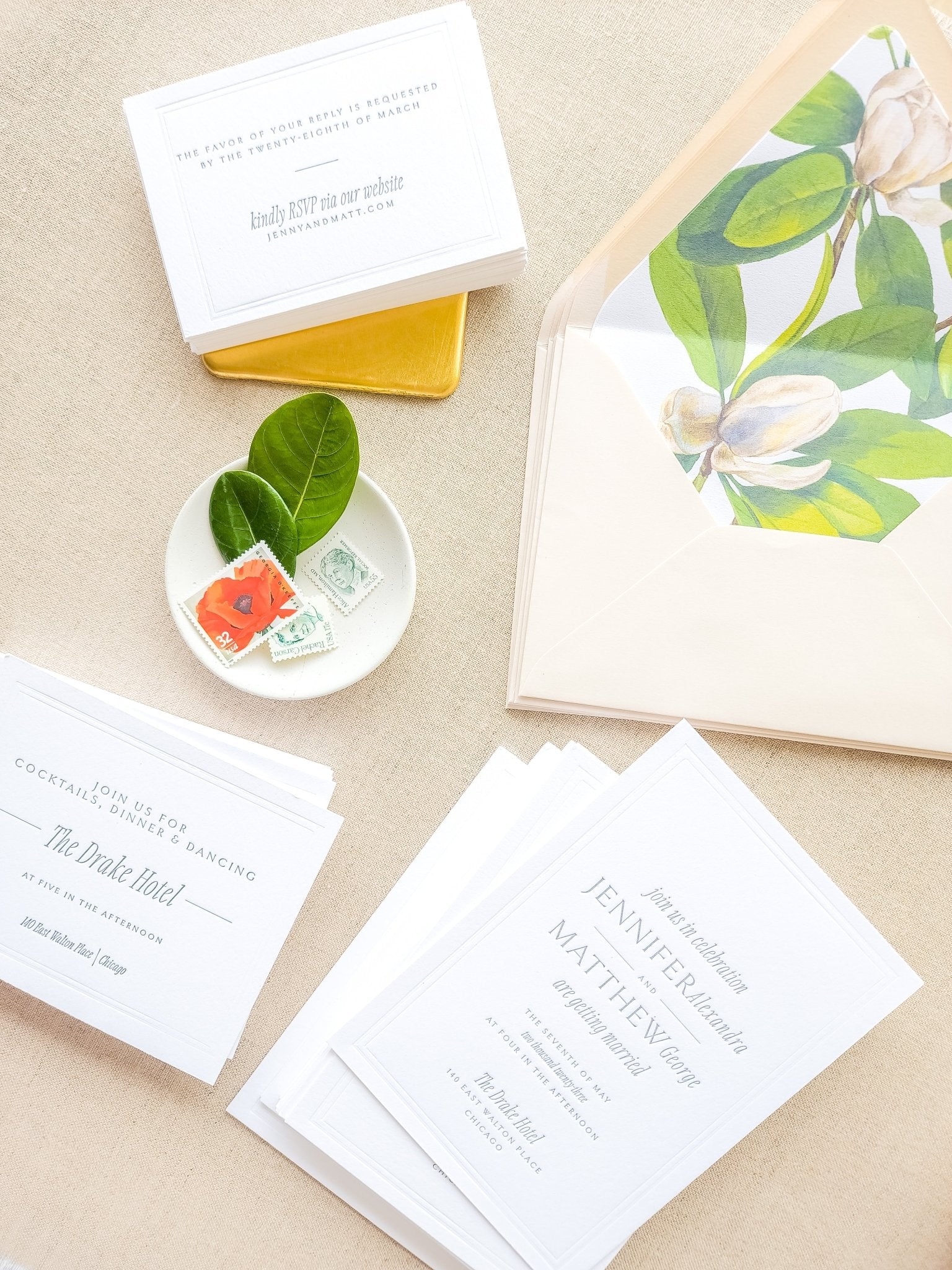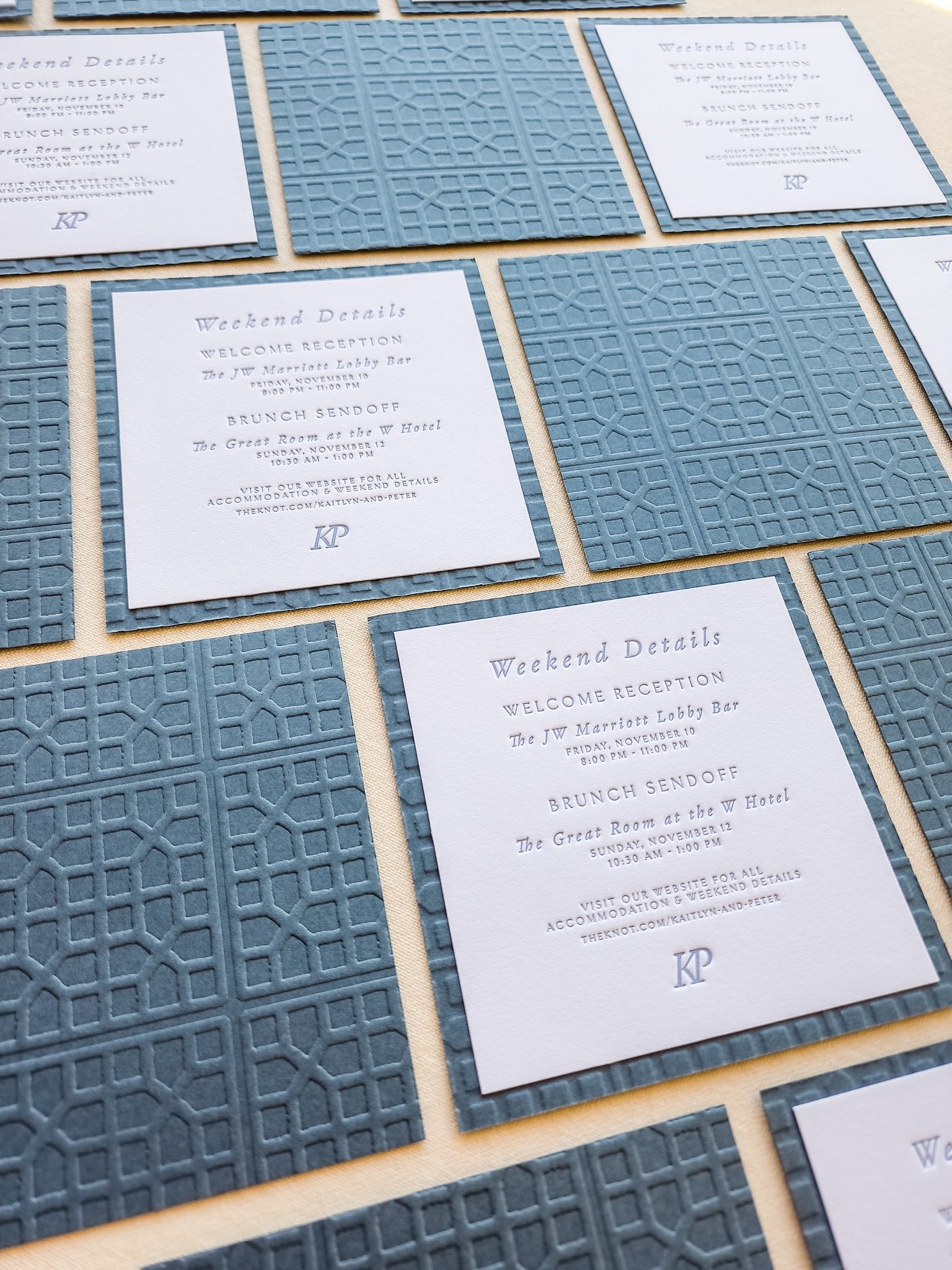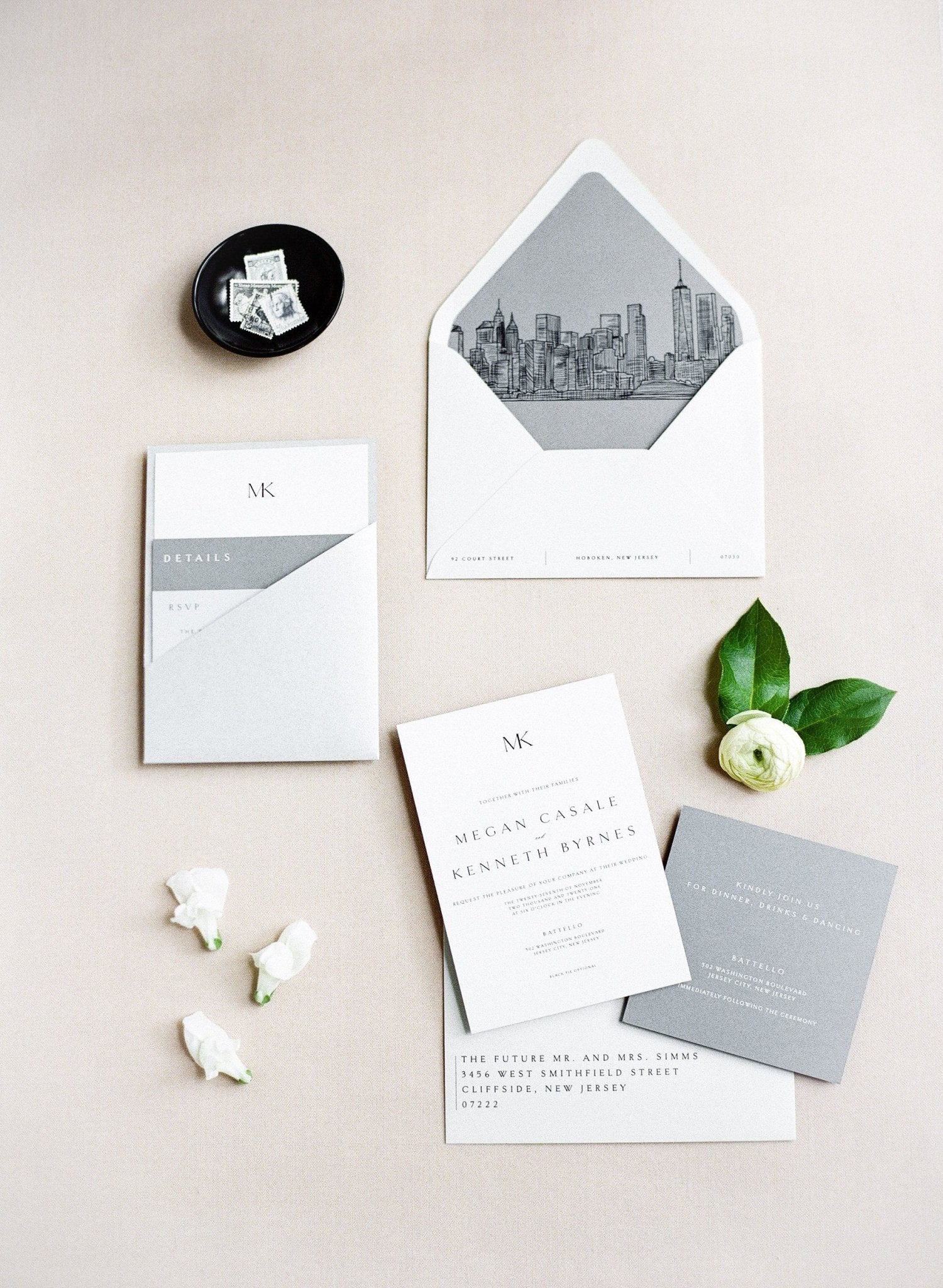
Discover the Timeless Elegance of Letterpress Printing for Luxury Wedding Stationery
Introduction
For luxury weddings, beautiful high-quality printed wedding paper is a must. Your invitations, programs, menus, and signage set the tone for your special day. Using a high-end printing method elevates your wedding stationery and creates an unforgettable elegant aesthetic.
When planning luxury wedding stationery, there are three popular printing methods to choose from: letterpress, engraving, and thermography. Each method produces a different look and feel. Understanding the differences will help you select the right method for your wedding vision.

What is Letterpress Printing?
Letterpress printing is a technique of relief printing using raised surfaces to transfer ink onto paper. The process started in the 1400s when Johannes Gutenberg invented the movable type metal printing press. It remained the most common form of printing until the 1960s and 1970s.
In letterpress printing, movable type or plates are inked and the raised surfaces are pressed onto paper to create an impression. The pressure transfers the ink onto the paper, resulting in a debossed texture. This creates a tactile, artistic impression different from flat commercial printing. The letterpress printer places paper over the inked plates and applies pressure using the printing press to transfer the ink.
Because of the pressure and raised print method, letterpress has an artisan, craft aesthetic. The results are an elegantly debossed, textured look and feel on thick, high-quality paper stocks. It has a three-dimensional feel compared to other printing methods. The artistic, non-commercial appearance makes it desirable for boutique projects like wedding invitations.
Letterpress vs. Engraving
Letterpress and engraving are two popular printing methods for luxury wedding stationery. While similar, there are some key differences between the two techniques.
Engraving uses an intaglio printing process, where an image or text is engraved into a metal plate, usually copper or steel. The engraved lines are filled with ink, and then the paper is pressed into the plate under high pressure, forcing the paper into the engraved lines to pick up the ink and give an indented impression. Engraving creates very fine, crisp details.
In contrast, letterpress uses a relief printing process with images and type printed in high relief from a raised surface. The inked surface is rolled over the paper to create the impression. Letterpress gives a more tactile, dimensional look and feel than engraving.
Engraving excels at detailed motifs and small script, while letterpress can better handle large graphic elements that bleed off the edge of the paper. Metallic inks also tend to work better with engraving. Overall, engraving has a very refined, formal aesthetic.
Letterpress vs. Thermography
Thermography is a printing process that uses a resin powder on wet ink to create a raised effect that mimics the look of engraved or letterpress printing. The process involves printing text in ink, then applying a resin powder to the wet ink which adheres to the tacky surface. Heat from an industrial dryer is applied, which fuses the resin powder to the ink, creating a raised look and feel.
Thermography is more affordable than traditional letterpress or engraving. However, some couples feel that thermography can look "fake" or flat compared to classic letterpress. The resin layer in thermography sits on top of the paper, rather than creating an indentation like letterpress. Thermography can also lose its luster and longevity over time as the resin cracks and chips. In comparison, letterpress printing directly stamps the paper, creating deeper pores and grooves for a true tactile impression.
Many couples planning luxury weddings prefer the more authentic, elegant aesthetic of letterpress. The dimensional quality of letterpress brings more texture, depth and craftsmanship for a timeless, sophisticated look.
Benefits of Letterpress Printing for Luxury Wedding Stationery
There are several key benefits that make letterpress printing the ideal choice for elegant, high-end wedding stationery:
Timeless Elegance
The raised impression created by letterpress gives printed materials a refined, classic elegance. Unlike printing methods like thermography that can appear flat, letterpress has an intrinsic texture that achieves the look and feel of a luxury printed piece.
Texture and Dimension
The impression left by the letterpress process results in a tangible texture and dimension on the paper. This attention to craft and detail elevates letterpress above other printing techniques.
Highest Quality
Letterpress ensures excellence in materials that will be treasured for a lifetime.
Achieving an Elegant Aesthetic
When it comes to achieving a classic, elegant look with letterpress wedding invitations, it all comes down to the details. From the typeface to the embellishments, every design choice contributes to that refined aesthetic brides are looking for.
 Letterpress allows for deep impression of ornate fonts and detailed engravings. Embellishments like foil stamping in metallic gold or rose gold add dimension and shine.
Letterpress allows for deep impression of ornate fonts and detailed engravings. Embellishments like foil stamping in metallic gold or rose gold add dimension and shine.
Custom details like monograms and guest names in flowing script, spot calligraphy or ornate display fonts add a personal touch. The heavy texture of thick, cotton rag paper stock feels luxurious and looks beautiful, especially with an artisanal letterpress finish. Upgrade to soft-white, ivory, or textured papers for added elegance.
Ordering Timeline
When planning luxury wedding stationery printed using letterpress, it's important to start the design process early. According to Letterlane Design Studio, couples should begin working with their stationer 12-18 months before their wedding date. This allows plenty of time for collaboration on the design, editing drafts, and finalizing details.
Once the design is finalized, the production timeline for letterpress printed wedding invitations is typically 10-14 business days, as noted by Little Ivy Paper Goods. Building in extra time for potential delays or reprints is recommended. For example, a couple getting married in October should finalize their design no later than August to ensure completed invitations are delivered with time for addressing, assembling, and mailing to guests.
The complete recommended timeline is:
- Begin stationery design process 12-18 months prior to wedding date
- Finalize design 3-4 months before wedding date
- Send final design to printer 2-3 months before wedding date
- Receive completed letterpress invitations 6-8 weeks before wedding date
Following this schedule provides leeway at each stage of the process and ensures your exquisite letterpress printed wedding suite arrives in plenty of time before the big day.
Conclusion
In summary, letterpress printing is an elegant, artisanal method that creates a dimensional, tactile impression perfect for luxury wedding stationery. Compared to engraving and thermography, letterpress stands out for its classic, romantic aesthetic and careful craftsmanship. The range of customization with different inks, motifs, and embellishments make it ideal for achieving a bespoke, sophisticated look. While more expensive than other printing processes, letterpress offers unmatched quality and timeless elegance that make it well worth the investment. For couples wanting their wedding stationery to convey luxury, romance, and personalization, letterpress is the clear choice. The beauty and distinction of letterpress will elevate any wedding for years to come.


